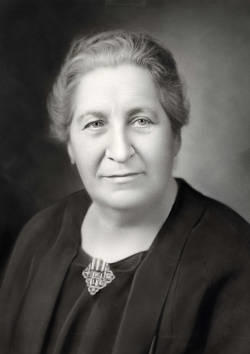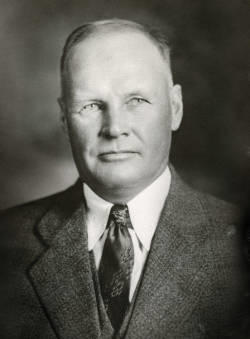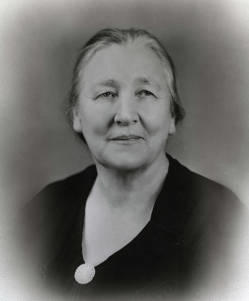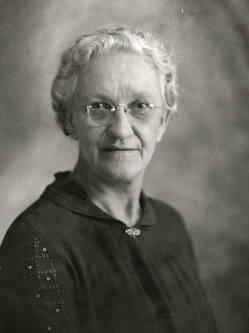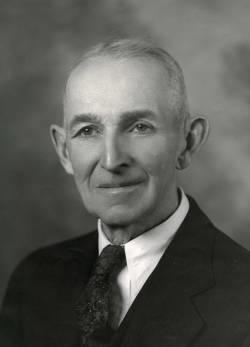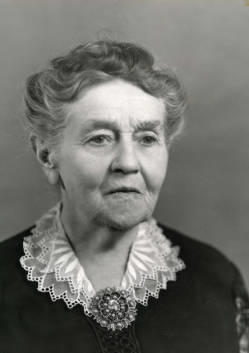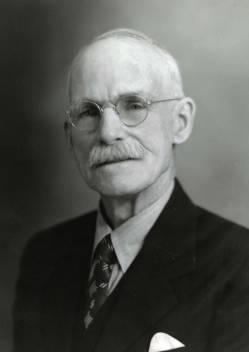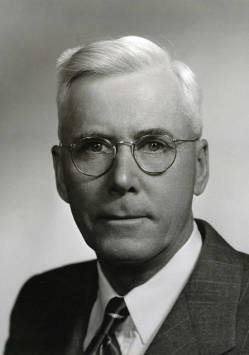Identity elements
Reference code
Name and location of repository
Level of description
Title
Date(s)
- 1927-2012 (Creation)
Extent
15.0 linear feet [6 oversize boxes-flat, 3 record boxes]
Name of creator
Biographical history
The Eminent Farmer and Homemaker Program has been a program of South Dakota State University since 1927. In that first year, following a campaign by the Farmer magazine and the South Dakota Agricultural Extension Service, the South Dakota Board of Regents named two South Dakota farmers Eminent Farmers. In addition to the degree granted by the Board of Regents, the farmer's portraits were hung on the wall in Agricultural Hall in what became known as the "Wall of Fame". In 1928, the Eminent Farmers were joined by two Master Farm Homemakers, a title granted by the Farmer's Wife magazine and the South Dakota Agricultural Extension Service. Women in 12 other states also received the citation, which began as an effort to heighten awareness of the role the farm home played in the community. These Master Homemakers also had portraits placed on the wall and were given the citation in a ceremony taking place at the same time as the Eminent Farmer ceremony. Beginning in 1935, the women's title changed to Eminent Farm Homemaker and the women, along with the men, were granted the degree by the South Dakota Board of Regents. Later still, the title evolved to its current name Eminent Homemaker.
In the early years, the Board of Regents actually granted an honorary degree to the chosen nominees. In the 1950's, the terms were clarified to set the citations apart from that of an honorary degree yet are still a great honor. Today, the College of Agriculture and Biological Sciences, the College of Family and Consumer Sciences and the Cooperative Extension Service jointly administer the Eminent Farmer and Homemaker program at South Dakota State University. The college deans and the director of the Extension Service appoint a committee made up of faculty and staff of the respective divisions to take responsibility for the program. Each spring, this committee sends out a letter to County Extension offices asking for nominations and alerts the news media that nominations are being sought. The committee makes recommendations based upon the nominees' contributions to their communities, their families and the professions. Their final recommendations are sent to the president of South Dakota State University for approval and then forwarded to the Board of Regents for final approval.
In 2019, the name of the program was changed to Eminent Leaders in Agriculture, Family, and Community.
Content and structure elements
Scope and content
This collection is composed of scrapbooks, photographs, citations, and publications related to Eminent Farmers and Homemakers.
The Scrapbooks are composed of three scrapbooks of the Eminent Farmers and Homemakers. Scrapbook I covers the years 1928-1969 and includes a report of an annual business meeting, newsletters, newspaper clippings of eminent farmers and homemakers (mainly obituaries), correspondence, programs and memorabilia. Scrapbook II is titled "Sands of Time" and covers the years 1952-1982. This scrapbook includes newspaper clippings, photographs, minutes from annual meetings for the years 1965-1982, and a necrology report for 1972-82 that lists deaths of eminent farmer and homemakers and notes the year that they were honored. Scrapbook III is titled "History, 1972-1988". This scrapbook includes biographies of eminent farmer and homemakers, programs from annual meetings and notes any deaths that occurred during the year. Also included is a mailing list of Master Farmer Homemakers for 1972-1988.
The Honoree photographs are composed of photographs of Eminent Farmer and Homemakers for the years 1927-1991. These photographs formerly hung on the Eminent Farmer and Homemaker Wall of Fame in Agricultural Hall on the South Dakota State University Campus. Most of the photographs are approximately 14.5 inches x 18 inches in size. Due to the manner in which these photographs were displayed, many were damaged by UV rays. On the mat of each photograph was a caption that included the name, year honored, and county or town of the Eminent Farmer of Homemaker. The Eminent Farmer photographs also included their occupation or area of interest in the caption. The Eminent Homemaker photograph captions only stated that each was an Eminent Homemaker and most do not include the woman's first name, only the name of their spouse preceded by Mrs. (i.e. Mrs. John Doe). This seemed to remain the practice until the late 1980's.
Mats and frames that housed the Honoree Photographs were removed for preservation purposes. Care was taken in the removal of the mats, however some tape and dried glue residue still remains. Photographs and negatives were removed to the Photograph Archives for preservation and access purposes. The negatives that accompany these photographs are mainly 4 inches x 5 inches in size and cover the years 1960-1991. The negatives were produced after the photographs were removed from Agricultural Hall and before the mats were removed. The caption that was included on the mat of each photograph appears in these negatives. This material is arranged chronologically.
The Honoree citations are composed of citations of Eminent Farmers and Homemakers. Each citation includes biographical information about the farmer or homemaker, information about how each manages their farm or household, and notes other awards or offices held. Some citations include a transcript of the acceptance speech given by the farmer or homemaker at the recognition banquet. The earlier citations generally include stories of how their families came to homestead in Dakota Territory and include accounts of dealing with blizzards and Indians. This material is arranged alphabetically.
Also included are programs published for the Eminent Farmers and Homemakers banquet held annually to recognize that year's recipients of the award.
System of arrangement
Conditions of access and use elements
Conditions governing access
This collection is open to researchers without restrictions.
The materials in the Archives do not circulate and may be used in-house only.
Researchers conducting extensive research are asked to make an advance appointment to access archival material. Please call or e-mail prior to visiting the collection and indicate as much detail as possible about a particular topic and intended use.
Physical access
Technical access
Conditions governing reproduction
South Dakota State University supports access to the materials, published and unpublished, in its collections. Nonetheless, access to some items may be restricted as a result of their fragile condition or by contractual agreements with donors.
Languages of the material
- English
Scripts of the material
Language and script notes
Finding aids
Acquisition and appraisal elements
Custodial history
Immediate source of acquisition
Appraisal, destruction and scheduling information
Accruals
Related materials elements
Existence and location of originals
Existence and location of copies
Related archival materials
Eminent farmers and homemakers of South Dakota by South Dakota State College of Agriculture and Mechanic Arts. Eminent Farmers and Homemakers Club.
Call Number: S415.S62
Eminent farmers and homemakers of South Dakota by South Dakota State University
Call Number: S415.S62
Related descriptions
Notes element
General note
Ask Us!
If you have questions or would like to schedule a visit, please let us know.









































